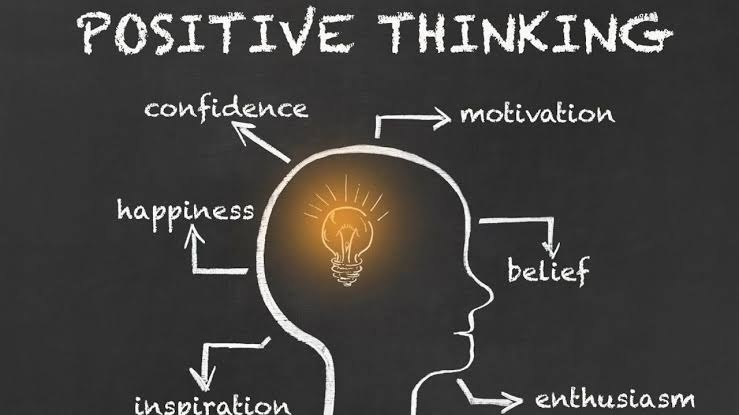Positive thinking is not about ignoring problems or pretending everything is fine. It is a proven way to see things that helps build strength, boost creativity, and improve well-being. By July 2025, many big studies—from Harvard’s Human Flourishing Program to the Canadian Institutes of Health Research—show that having a positive mindset can reduce stress, improve the immune system, and even help people live longer. In a world full of uncertainty, learning to think positively is a smart and practical choice.
Understand the Science Behind Positivity
Our brains evolved with a “negativity bias” that helps us detect threats, yet that same bias can trap us in cycles of worry and self‑doubt. Modern neuroscience shows that intentionally focusing on constructive thoughts stimulates neural pathways associated with reward and motivation, bolstering the release of dopamine and serotonin. Functional MRI scans in 2024 revealed that individuals who practiced daily gratitude journaling developed thicker prefrontal cortex regions—areas linked to decision‑making and emotional regulation—after just eight weeks. Recognizing that positivity changes brain chemistry makes the practice feel less like wishful thinking and more like mental fitness.
Reframe Negative Self‑Talk
The first step toward a positive mindset is catching automatic negative thoughts (ANTs) before they gain momentum. For example, instead of thinking, “I always mess up,” reframe to, “I made a mistake, but I can learn from it.” Cognitive‑behavioral therapists recommend a three‑part technique:
- Notice the thought.
- Name the distortion (“catastrophizing,” “all‑or‑nothing thinking,” etc.).
- Neutralize it with evidence for a more balanced view.
Over time, this conscious rewiring trains your brain to approach challenges with solution‑oriented curiosity rather than defeat.
Practice Daily Gratitude
Gratitude is one of the quickest ways to shift from scarcity thinking to abundance thinking. A 2025 meta‑analysis in The Journal of Positive Psychology found that writing down three specific things you’re thankful for each day can raise baseline happiness levels by up to 10 percent in six weeks. The key is specificity: “I’m grateful for my supportive partner who made coffee this morning” is more powerful than “I’m grateful for my family.” Apps like Gratitude Garden and pen‑and‑paper journals alike can help keep the habit consistent.
Visualize Success with Purpose
Visualization isn’t just for elite athletes anymore. When you vividly imagine achieving your goals—feeling the emotions, seeing the environment, even hearing surrounding sounds—your brain fires the same neural pathways as it would during real performance. To harness this power:
- Set a clear, SMART goal.
- Spend 2‑3 minutes daily imagining the process (not just the outcome).
- Pair visualization with action steps so your mind links positive imagery to tangible behavior.
By July 2025, many Canadian universities include guided visualization modules in student success programs to bolster focus and confidence.
Surround Yourself with Positive Influences
Human emotions are contagious; we subconsciously mimic facial expressions and internalize attitudes from those around us. Curate your environment—online and off—by following uplifting social media accounts, joining supportive communities, and spending time with people who inspire growth. If in‑person support is scarce, virtual mastermind groups or mentorship platforms can fill the gap. The goal isn’t to avoid friends in tough seasons but to maintain an overall circle that nurtures solution‑focused dialogue rather than chronic complaint.
Adopt a Growth Mindset
Coined by psychologist Carol Dweck, a growth mindset is the belief that skills and intelligence can be developed through effort, strategies, and feedback. Contrast this with a fixed mindset, which sees abilities as static. To cultivate growth thinking:
- Celebrate effort as much as outcomes.
- View feedback as data, not personal attack.
- Replace “I can’t” with “I can’t yet.”
Companies across Canada now integrate growth‑mindset workshops into leadership training, citing improved innovation and employee engagement.
Leverage Mindfulness and Meditation
Mindfulness teaches you to observe thoughts without judgment, creating space between stimulus and response. Short, daily practices—like breathing exercises or guided meditations—reduce cortisol levels and foster mental clarity. In 2025, wearable devices such as heart‑rate variability rings provide real‑time feedback, helping users see physiological benefits of mindful pauses. Start with five minutes each morning, focusing on breath or bodily sensations, and gradually increase duration as comfort grows.
Move Your Body for Mood Enhancement
Regular physical activity remains one of the most reliable mood boosters. Exercise releases endorphins, regulates sleep, and enhances cognitive function. Whether it’s a brisk walk, yoga, or weight training, aim for at least 150 minutes of moderate movement per week. Pair workouts with motivational music or podcasts to reinforce positive associations. Studies in early 2025 show that outdoor exercise—“green exercise”—has an amplified effect on stress reduction and creative thinking.
Set Boundaries and Prioritize Self‑Care
Positivity thrives when energy isn’t constantly drained by overcommitment or toxic interactions. Learn to say no without guilt, schedule downtime, and disconnect from digital overload. Self‑care is not selfish; it’s the maintenance that enables you to give your best. Simple rituals—like a tech‑free evening, a relaxing bath, or a hobby hour—signal to your brain that you are worthy of care, reinforcing positive self‑perception.
Celebrate Progress, Not Perfection
Perfectionism often masquerades as ambition but silently fuels frustration. Shift focus from flawless execution to incremental improvement. Keep a “win log” where you note daily or weekly successes, no matter how small. Reflecting on progress trains your mind to recognize positive momentum and builds confidence for tackling larger goals. In workplaces, team “retrospective” meetings serve a similar function, acknowledging achievements before analyzing challenges.
Conclusion: Positivity as a Lifelong Practice
Cultivating a positive mindset is not a one‑time task; it’s a lifelong practice of intentional thought, supportive habits, and constructive environments. By understanding the science behind positivity and applying strategies like gratitude journaling, visualization, mindfulness, and boundary‑setting, you equip yourself to navigate life’s inevitable hurdles with resilience and optimism. As research up to July 2025 confirms, the power of positive thinking extends beyond feel‑good moments—it reshapes brain chemistry, enhances physical health, and opens doors to greater creativity and connection. Start small, stay consistent, and watch how a shift in mindset transforms your world from the inside out.




5n7lam